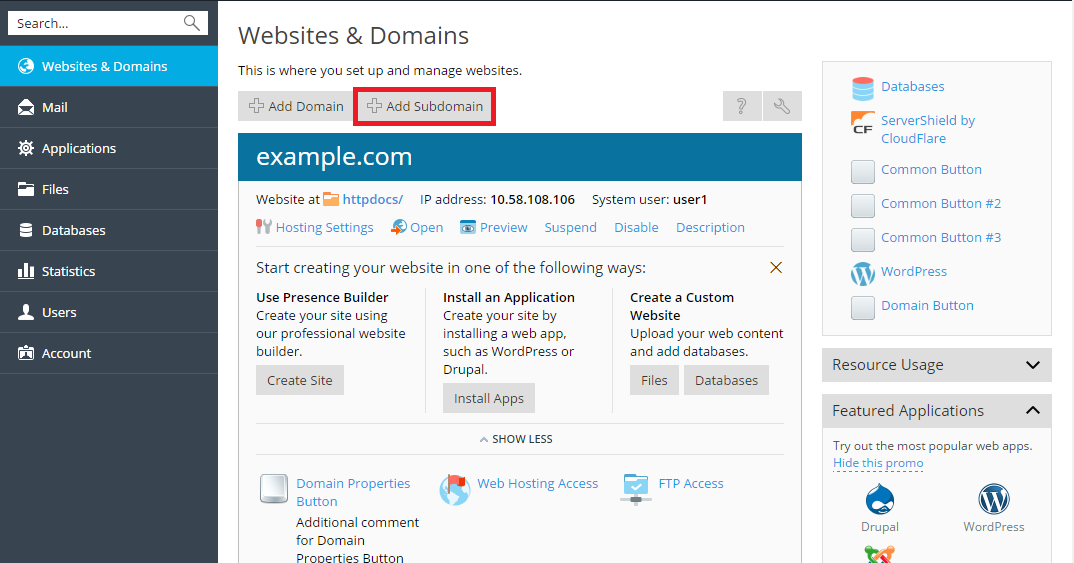Watch the video tutorial
If your hosting package includes subdomains, which are additional
third-level domain names, then you can use them to:
- Organize logically the structure of your site.
- Host additional websites or parts of a website on the same server
without the need to pay for registration of additional domain names.
An example of using subdomains:
You have a website your-product.com dedicated to promoting and selling
your product. For publishing information related to customer service and
online order tracking, you can organize the subdomain “orders” so that
your users will be able to access this information directly by visiting
the Internet address “orders.your-product.com”.
As subdomains have the same status with the additional domains, you can
use the same set of tools and services for working with subdomains. For
example, SSL/TLS protection, Presence Builder, web statistics, and so
on.
To set up a subdomain for a site division or a separate site:
-
Go to Websites & Domains.
-
Click Add Subdomain.

-
Specify the following:
- In the Subdomain name box, type the portion of address that
will be added to the domain name of your main site. - In the Document root box, type the desired location of the
directory where all files and subdirectories of this site will be
kept. You can use the default directory of the main site, called
httpdocs, or specify another directory.
- In the Subdomain name box, type the portion of address that
-
Click OK.
The new subdomain name is now shown in the list at the bottom of the
screen.
You can now upload your web content to the subdomain (directory on the
server), as described in the Website Content section,
the Uploading Content Using FTP subsection.
Wildcard Subdomains
If you enter the asterisk (*) symbol as a subdomain name, Plesk will
create a so-called wildcard subdomain. When site visitors enter any
subdomain name that is not registered in Plesk, they will be redirected
to this wildcard subdomain. You can create wildcard subdomains on any
domain name level. For example, you can create the
*.mystore.example.com subdomain. Learn more about wildcard subdomains
in the section Adding Wildcard Subdomains (Linux).
